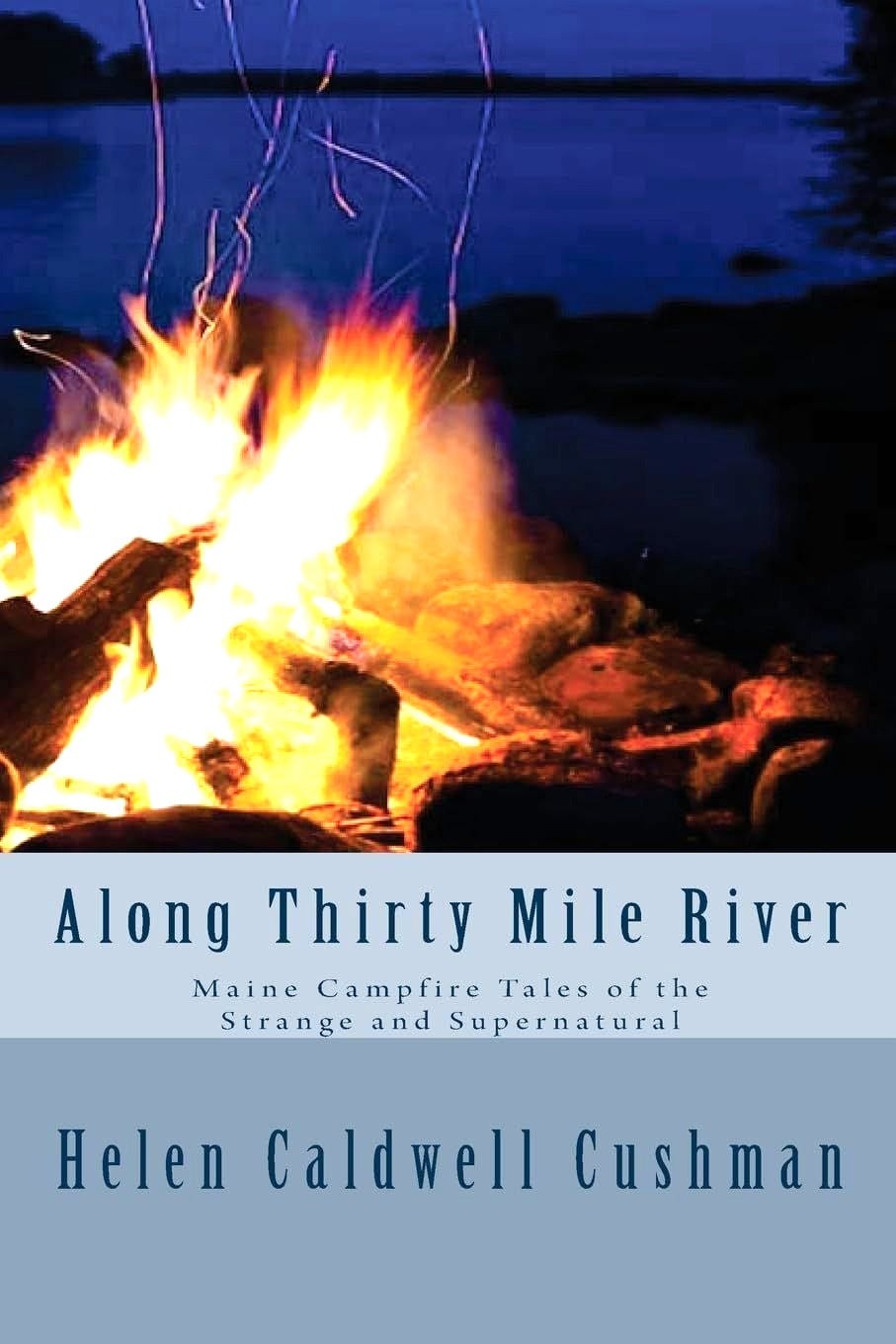Maine rivers were a magnet for French-Canadian immigrants
A review about some Maine river histories and dangerous floods
New England’s Franco-Americans can rightly say “Merci!” to the area’s volatile rivers for bringing their ancestors to Maine and New England, to find work in the mills.
With the devastating tragedy continuing to impact the people of Texas during the flash flooding of the Guadalupe River, in Central Texas, it occurred to me to check in on the history about how Maine’s rivers were a magnet for Franco-American immigrants.
Although devastating floods have been reported over the years in Maine, especially along the Kennebec River running through Augusta and Hallowell, caused either by weather events like ice jams, there has not been the loss of life and devastation, in my reporting, to come close to what the innocent people in Texas are experiencing. Flooding devastated property along the Androscoggin River in Brunswick and parts of Topsham during the very damaging 1938, hurricane. In York County, even the docile Mousam River, running through Springvale and Sanford, has had episodes of flooding, but nothing as catastrophic as is currently happening in Texas.
French-Canadian immigration into New England during the last two centuries (1830s-1950s) is also a story about how the new migrants from the north and Canadian Maritimes, settled where they were close to mills, located near water power.
Tens of thousands of immigrants from French Canada found their way into New England’s cities and towns where the growth of textiles and shoe mills needed workers. Those mills were located where access to water provided hydropower. An article I wrote about this history was published in 2006, where the information was focused on York County Maine’s rivers. An update to this article includes a visit my husband and I made to the interesting Head of Tide waterfront park in Sagadahoc County, located on Cathance Road, in Topsham, where a twenty foot waterfall from the Cathance River flows into a tidal offshoot of Merrymeeting Bay.
Check this video I published on my social media channel
A report in the Portland Press Herald described the origins of this scenic park. “The Cathance River gets its name from the Abenaki word for bent or crooked, ‘Kathanis’. Settlers claimed this spot in 1716, building a lumber mill – and fighting regularly with the Native Americans for whom it was a first and true home – and in the meantime, introducing commerce to the area. On and off, that commerce perched on top the Head of Tide in various forms. A mill burned, was rebuilt, burned again. From 1722 to 1725, the Native Americans and settlers engaged in a war. By 1738, a new mill stood at Head of Tide and throughout the decades, men came and went, using the hydropower of the falls.” (By the way, the Cathance River regularly floods the Meadow Road as it goes through Topsham, to Bowdoinham.)
This lovely Head of Tide park is now owned by the Brunswick Topsham Land Trust, an environmental organization, that conserves, protects, and stewards the cherished landscape and rich natural resources of communities, to connect people to nature by providing recreational opportunities, and other engaging community activities, and to support local agriculture and fisheries, now and “for generations to come” (Reported on the website).
Following is an article published in 2006, about Franco-American immigration and southern Maine’s rivers:
York County Maine Rivers Attracted Franco Workers to Mills
York County, Maine, USA has a network of usually quiet scenic rivers. But they made major news during a period of torrential rains with dangerous flooding. “Inondations” or “les deluges” (words for “floods” en française) caused by the excessive rain that swelled sleepy rivers causing millions of dollars in damage. “Mother’s Day Flood”, 2006 brought nearly 20 inches of rain and led to millions of dollars in damages in York County, caused by a stalled low pressure, a high pressure area to the east and tropical moisture, that worked in a “perfect storm” type of configuration to bring extreme rain to southern Maine.
In the recent past, the York County rivers created hydropower for mills and plenty of work for Franco-Americans and their immigrant ancestors.
Although they are usually quiet waterways, picturesque rivers like the Mousam, the Kennebunk, the Ogunquit and the Mildford Dam along the Salmon Falls River have a history of bringing commerce and industry to York County, but also risks of flooding.
The attraction of plentiful water power brought industrial mills to the area and French-Canadians workers into Southern Maine and Southeastern, NH. Communities like Biddeford, Sanford, Kennebunk and Somersworth, NH grew along with the textile and shoe mills built along York County’s and Strafford County’s rivers.
Franco-Americans living in these communities today are descendents of the first French speaking immigrant mill workers, who came mainly from Quebec and the Canadian Maritime Provinces.
A typically quiet Mousam River winding its way through Sanford-Springvale recently surged to near flood levels near Muriel Poulin's Springvale home during seasonal floods. “The river didn’t rise into my back porch, but you sure wouldn’t want to be caught in the dangerous current,” said Poulin, a Springvale native and Franco-American.
A history of Maine’s rivers is written in, “Toward a New Balance in the 21st Century”, a summary about Maine’s dams and river restoration published by the Natural Resources Council of Maine. https://digitalmaine.com/do/search/?q=corporate_author%3A%22Natural%20Resources%20Council%20of%20Maine%22&start=0&context=3363941&facet=
Historically, Maine’s rivers served as routes of commerce for Native American peoples. French and other European settlers used Maine’s rivers for fishing and later for providing the power to support the textile mills and factories.
Between the years 1830-1950, French speaking immigrants from Quebec and the Canadian Maritime Provinces were attracted by the industrial work created in saw mills, tanneries, paper mills and textile factories.
Individual stories about those attracted to work in the mills fueled by the hydro-power of Maine’s rivers are captured in the classic anthology “Quiet Presence: Histories of Franco-Americans in New England” by Dyke Hendrickson, published in 1980. Stories include the Robert Lambert, from Somersworth, New Hampshire, where the Salmon Falls River has had to close streets due to “le deluge”.
Lambert talks to author Hendrickson about how his father was only 18 years old in 1896, when his family came down from Quebec to find work. “Mills were recruiting in Canada then, so people heard about the work available. My father and grandfather were farmers near St. Frederick, in New Brunswick, Canada, but the life was hard…..They didn’t have jobs when they came to Somersworth, but an uncle who was here for two years helped them get work.”
Lambert’s family intended to earn some money and return to their New Brunswick (Canada) farms to help buy better equipment and tools, but they actually never went back. Instead, they started roots in Somersworth.
In 1881, Lambert’s mother (Ruel) was only two years old when her family moved from Quebec Province to the Somersworth area.
“My parents (Lambert and Ruel) worked in the mills as a matter of course. They met there, they married and then the children came,” recalls Lambert.
At the age of 14, Lambert began working in the mills himself, where he earned about $11 a week.
A fun read to become familiar with folklore (and history) about Maine’s rivers is available in “Along Thirty Mile River: Maine Campfire Tales of the Strange and Supernatural”, by Helen Coldwell Cushman and Betsy Connor Bowen, who wrote the introduction.





